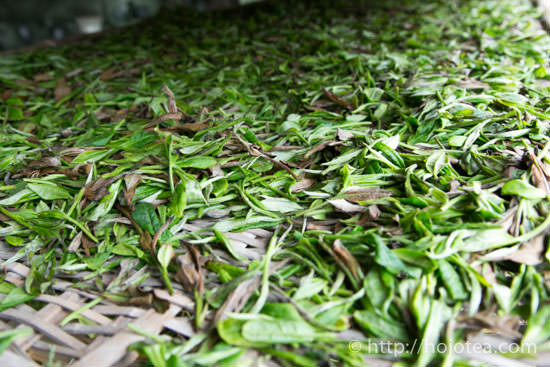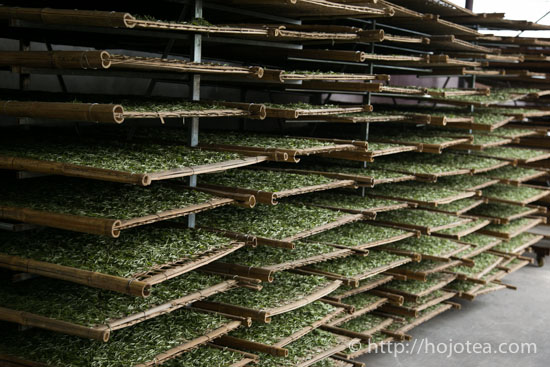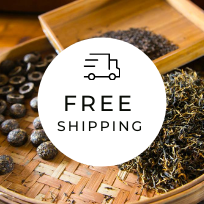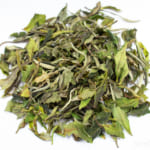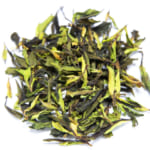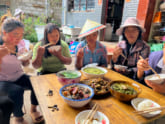- HOME >
- Tea Processing
The secret of making quality white tea
- [2013.03.30] Posted By Akira Hojo
I have spent two days in the white tea factory located in Fuding city of Fujian province in China.
The difference between white tea and green tea
The main difference of white tea from green tea is that green tea will undergo either pan-frying process or steam-heating process in order to inactivate the enzyme. As for white tea, there is no heating process to inactive the enzyme. If fresh tealeaf is heated, we do not call it white tea, but green tea. There are many kinds of green tea in the market that appearance is very white thanks to the white pekoe. But they are still called green tea as long as heating process is involved.
The withering is the simplest and the most difficult process
The most important process for making white tea is the withering process. It involves outdoor withering under the sun and indoor withering at controlled room temperature. After the fresh tealeaves are plucked and gathered, it will be sent to the factory. The fresh tealeaves are then carefully spread on the bamboo plate and left under the sun for a few hours, and subsequently it will be kept in a room for more than 12 hours. The room is equipped with fans to circulate the air. Besides, the room is kept warm using hot air. Usually, the room temperature is controlled at about 36 degree C. Many people tend to think that making white tea is very easy since it just has to be naturally dried. If one never care about the tea quality, it is indeed very easy to produce. You just need to keep tea in a room with good ventilation so that tea will lose moisture and becomes white tea. However, the simply dehydrated tea will develop stale or oxidized flavour. The leaf sometimes turns brown if excess fermentation occurs. Besides, without much attention during the handling of teas, it becomes red once tealeaf is damaged, or if it’s stack, it turns black.
Managing moisture is the key
We followed master Zhen who has more than 40 years of experience in making white tea. According to him, the key to process good white tea is the speed, management of right temperature and duration of withering process. If tealeaf is half-way dried, the moisture distribution between the surface of leaf and inside the leaf is not the same. If one just continues the same temperature, the moisture will be trapped inside the leaf and it will develop stale flavour. When the moisture on the surface starts disappearing, they have to raise the room temperature in order to reduce the internal moisture.

Fresh tea leaves meant to be processed into Bai Mu Dan
The freshly processed Bai Mu Dan

The withering process of silver needle
Indoor withering of Bai Mu Dan
White tea is supposed to give floral flavor
With the good management in process, the white tea will develop sweet and floral flavour. It is very refreshing and you can hardly feel any stale flavour. After spending two days in Fuding, I managed to find the right manufacturer and successfully purchase two types of white tea. For the details about the white teas, I will continue later.
Related Articles
How to get the latest update on HOJO Tea?
1. Follow Twitter, 2. Click "Like" on Facebook, and 3. Subscribe in newsletter. You can have the latest tea news from HOJO Tea.
 Subscribe the Newsletter to enjoy the privileges
Subscribe the Newsletter to enjoy the privileges- You may receive a free sample upon purchase, or you may have the priority to purchase special products. So please remember to subscribe our newsletter as well as the social network.
- Yunnan Chun Jian Green Tea from High Mountain Gardens
- Yunnan Chun Jian Green Tea is now available.This tea is made from naturally grown leaves harvested from high mountain gardens at 2100m above sea level. It has a rich, long-lasting lingering aftertaste, comparable to raw Pu-erh tea. Yunnan as a Distinctive Tea Growing Region Over the past 20 years, we have explored a wide range …
- Limited Loose Leaf Release of 2025 Da Xue Shan Wild Raw Pu-erh Tea
- We have released the 2025 loose-leaf version of Da Xue Shan Wild Raw Pu-erh Tea.This tea comes from wild tea trees that grow naturally in the high mountains of Yunnan Province, at elevations above 2000 meters. This year, we were only able to secure a small quantity for retail, and the current release is available …
NEW ARTICLES
 Yunnan Chun Jian Green Tea from High Mountain Gardens
Yunnan Chun Jian Green Tea from High Mountain Gardens- Yunnan Chun Jian Green Tea is now available.This tea is made from naturally grown leaves harvested from high mountain gardens at 2100m above sea level. It has a rich, long-lasting lingering aftertaste, comparable to raw Pu-erh tea. Yunnan as a Distinctive Tea Growing Region Over the past 20 years, we have explored a wide range …
 Limited Loose Leaf Release of 2025 Da Xue Shan Wild Raw Pu-erh Tea
Limited Loose Leaf Release of 2025 Da Xue Shan Wild Raw Pu-erh Tea- We have released the 2025 loose-leaf version of Da Xue Shan Wild Raw Pu-erh Tea.This tea comes from wild tea trees that grow naturally in the high mountains of Yunnan Province, at elevations above 2000 meters. This year, we were only able to secure a small quantity for retail, and the current release is available …
 2025 Da Xue Shan Wild White Tea Now Available from Yunnan
2025 Da Xue Shan Wild White Tea Now Available from Yunnan- The 2025 harvest of Da Xue Shan Wild White Tea is now available. Crafted from truly wild Camellia taliensis trees growing naturally in the high-altitude forests of Yunnan, this tea offers a purity and character unique to its origin. This year’s unusually dry climate during the withering season was ideal, resulting in a floral and …
 Why Do Some Teas Taste Astringent? Exploring the Causes and Mechanisms of Astringency
Why Do Some Teas Taste Astringent? Exploring the Causes and Mechanisms of Astringency- Tea can range from having no noticeable astringency to possessing a very strong one. What causes this astringency? This article explores the causes and mechanisms behind astringency in tea. Causes of Astringency Astringency arises from the binding of tea components to proteins in the oral cavity, creating a sensation of tightness or dryness. The tongue …
 The Impact of Heat Sources on Tea Flavor
The Impact of Heat Sources on Tea Flavor- It is widely recognized that the material of a kettle plays an important role in shaping the taste of water for brewing tea. Yet, an often overlooked but equally significant factor is the type of heat source used to boil the water. Different heat sources, whether gas, electric, charcoal, or wood fire, can impart distinct …
 New Release of High Mountain White Tea
New Release of High Mountain White Tea- We are pleased to introduce our High Mountain White Tea, sourced from a unique tea garden with two key features: 1. Located at an altitude of 2200-2300m2. Completely wild and untended The ideal natural conditions of this garden result in tea of exceptional quality, offering a pure and gentle, nourishing taste. High Altitude and Wild …
 New Release of Da Xue Shan Wild White Tea 2024
New Release of Da Xue Shan Wild White Tea 2024- We have released the 2024 Da Xue Shan Wild White Tea Loose Leaf. This tea was produced under our direct supervision during our stay in Yunnan Province, ensuring meticulous production management on site. Definition of Wild Tea in Yunnan Province People in Yunnan strongly associate Camellia taliensis with wild tea, regardless of where it is …
 New Release of Wild Pu-erh Jasmine Pearl
New Release of Wild Pu-erh Jasmine Pearl- Out of curiosity, we decided to create a jasmine tea based on Da Xue Shan Wild Raw Tea. This resulted in an exceptionally rare tea, not only in Japan but also in China. Custom Production Network for Jasmine Tea At our store, we source various types of base teas from different regions during the spring. …
 2024 Overview: Our Yunnan White Tea Quality, Process, and Weather Insights
2024 Overview: Our Yunnan White Tea Quality, Process, and Weather Insights- One of the teas we’ve been focusing on in Yunnan Province is white tea. Historically white tea has been produced in both Fujian Province and Yunnan Province for a long time. While white tea from Fujian Province is well-managed during processing, we are dissatisfied with the quality of the raw materials due to the use …
 Yunnan’s Hospitality Culture: Expressed Through Meals
Yunnan’s Hospitality Culture: Expressed Through Meals- In China, as a form of greeting, it’s common to say “你吃饭了吗?” which means “Have you eaten?” However, in Yunnan Province, the phrase “吃饭” is often used in various situations, more like “Eat, eat,” serving as an invitation to share a meal. Yet, with prolonged exposure to Yunnan, one comes to understand that these meal …
Shop Info

Address:Lot No. T-215, 3rd Floor, The Gardens Mall, Mid Valley City, Lingkaran Syed Putra, 59200 Kuala Lumpur
Tel: +603-2287-4537
Business Hour: 10am to 10pm
Category
- New Arrival at HOJO Online Shop
- Featured Articles
- Newsletter
- Types of Tea
- Origin of Tea
- Teapot and Tea Equipment
- Tea Column
- How to enjoy tea
- Tea Processing
- How to choose quality tea
- Tea constituents and functional effect
- Safety of Tea
- Foods
- Tea Business Operation
- Hobby and Outdoor Activity
- Ranking of Tea
- Video
- FAQ
- Media Release
Profile

- AKIRA HOJO
- I invite you to experience my tea selections.I was born in Nagano, Japan. In university, I studied agricultural chemistry, and I have the master degree in food science. I worked in Japanese food industry for 10 years. I involved in R&D, QC and QA. As a factory manager, I implemented ISO9000 series and managed the factory.
- The Art of Tea Magazine
- We posted the article on “The Art of Tea Magazine No.9, the magazine is published in Taiwan. We featured some scientific view about the tetsubin
- New Straits Times
- The Malaysian National Newspaper, New Straits Times featured HOJO Tea on 17-Oct-2007.




